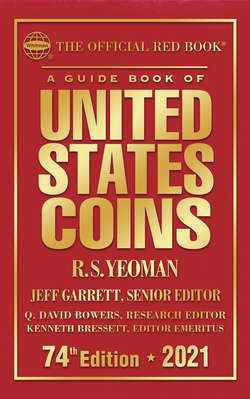Читать книгу A Guide Book of United States Coins 2021 - R.S. Yeoman - Страница 18
Counterfeits
ОглавлениеFor many centuries, counterfeiters have produced base-metal forgeries of gold and silver coins to deceive the public in the normal course of trade. These pieces are usually crudely made and easily detected on close examination. Crudely cast counterfeit copies of older coins are the most prevalent. These can usually be detected by the casting bubbles or pimples that can be seen with low-power magnification. Pieces struck from handmade dies are more deceptive, but the engravings do not match those of genuine Mint products.
More recently, as coin collecting has gained popularity and rare coin prices have risen, “numismatic” counterfeits have become more common. The majority of these are die-struck gold coin counterfeits that have been mass produced overseas since 1950. Forgeries exist of most U.S. gold coins dated between 1870 and 1933, as well as all issues of the gold dollar and three-dollar gold piece. Most of these are very well made, as they were intended to pass the close scrutiny of collectors. Few gold coins of earlier dates have been counterfeited, but false 1799 ten-dollar gold pieces and 1811 five-dollar coins have been made. Gold coins in less than Extremely Fine condition are seldom counterfeited.
Silver dollars dated 1804, Lafayette dollars, several of the low-mintage commemorative half dollars, and the 1795 half dimes have been forged in quantity. Minor-coin forgeries made in recent years are the 1909-S V.D.B., 1914-D and 1955 doubled-die Lincoln cents, 1877 Indian Head cents, 1856 Flying Eagle cents, and, on a much smaller scale, a variety of dates of half cents and large cents. Nineteenth-century copies of colonial coins are also sometimes encountered.
